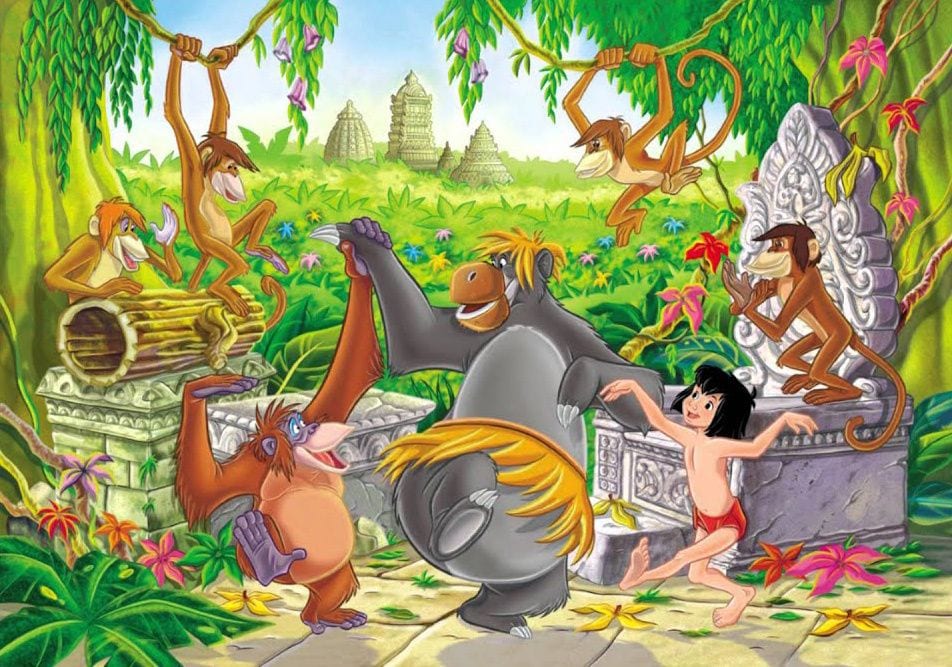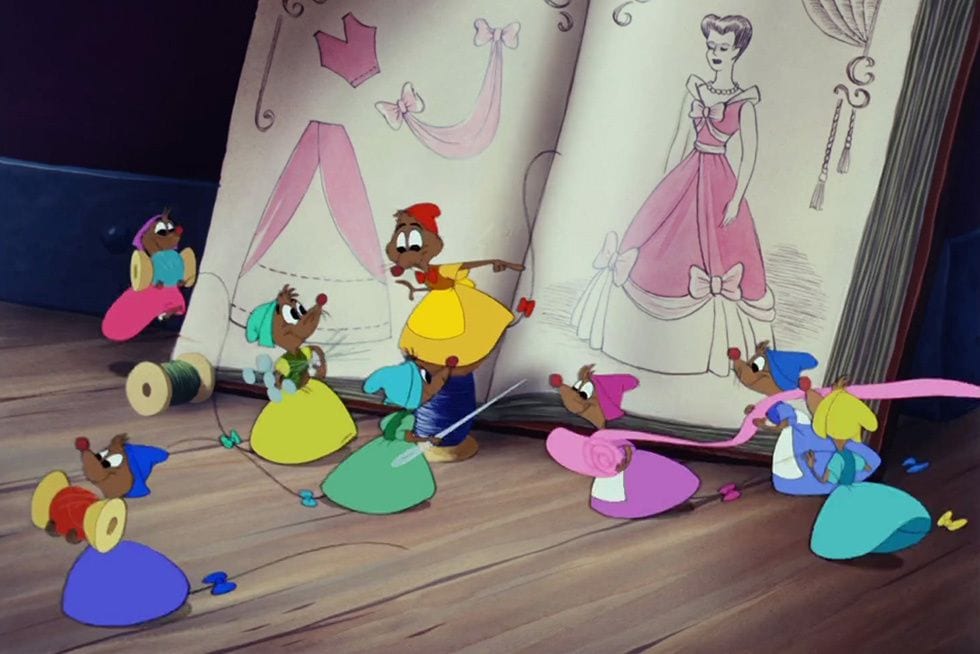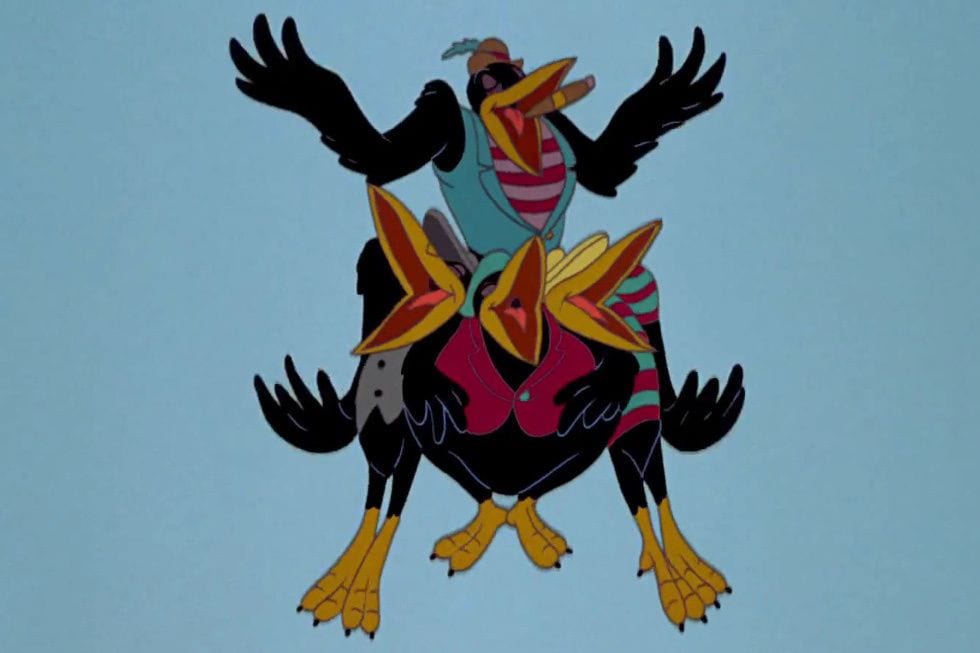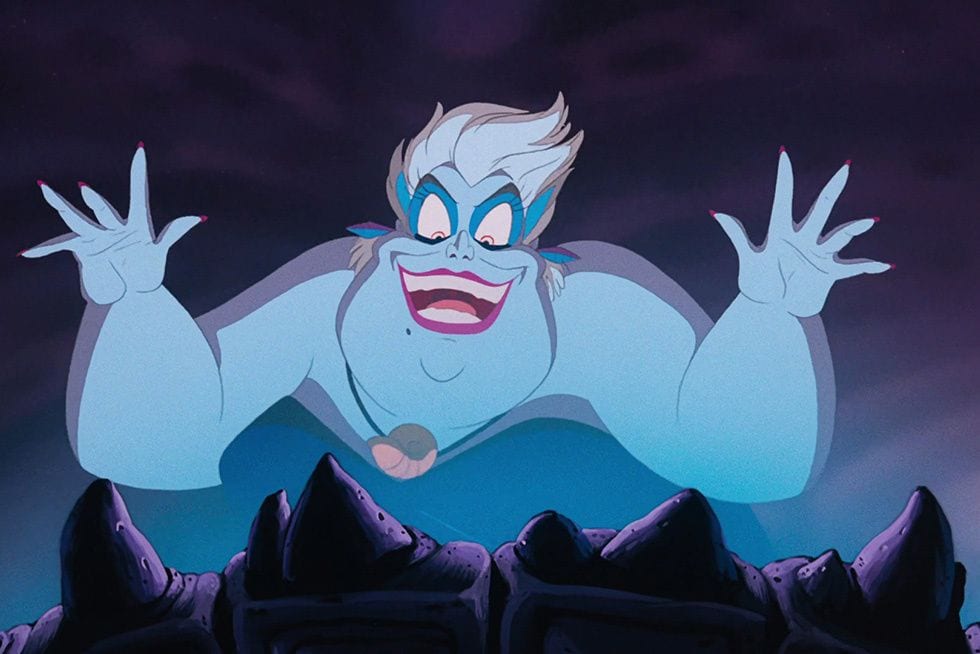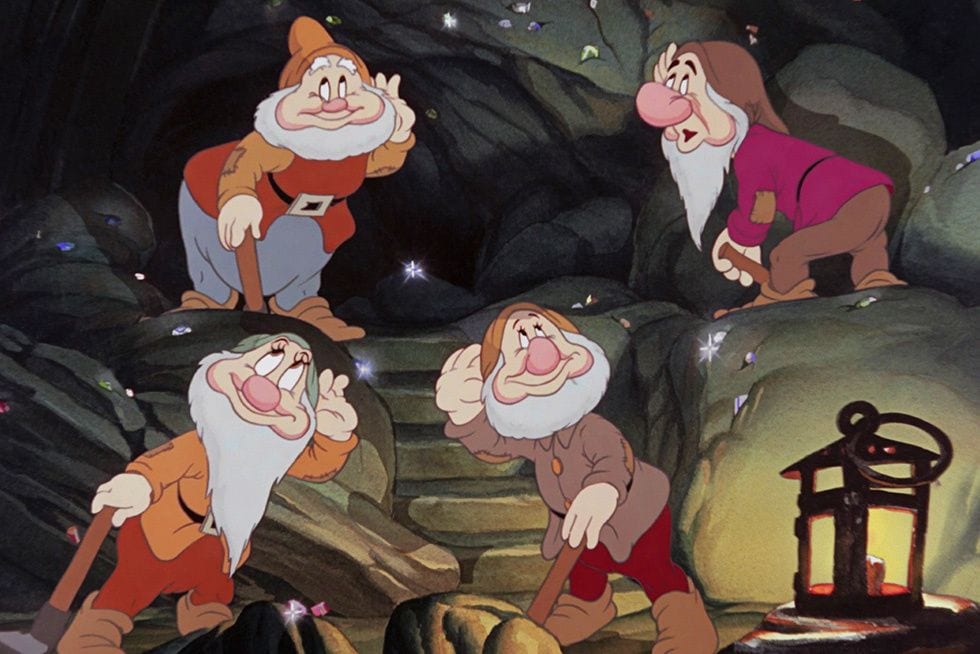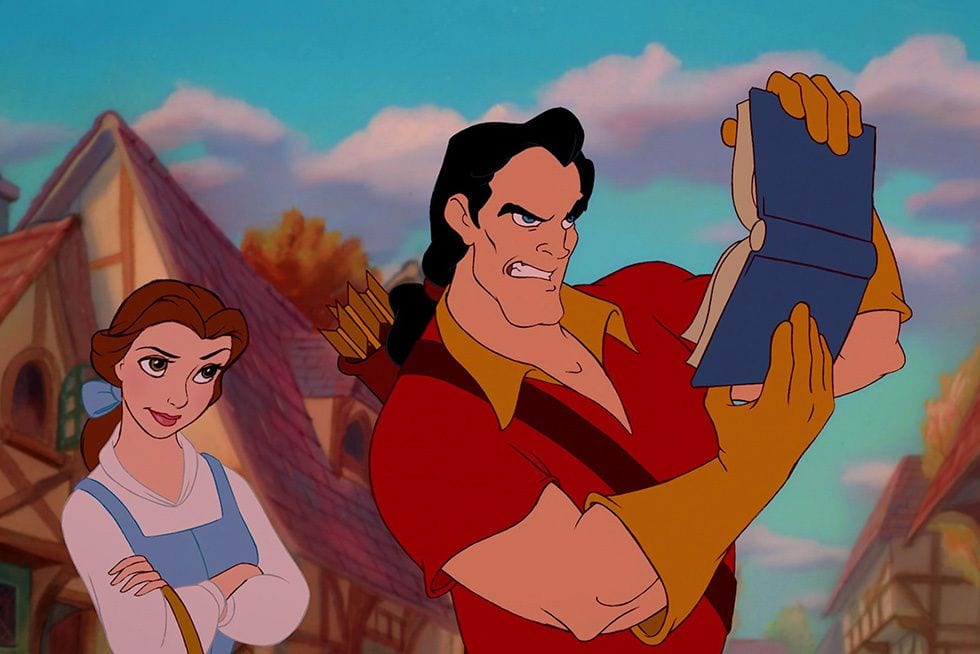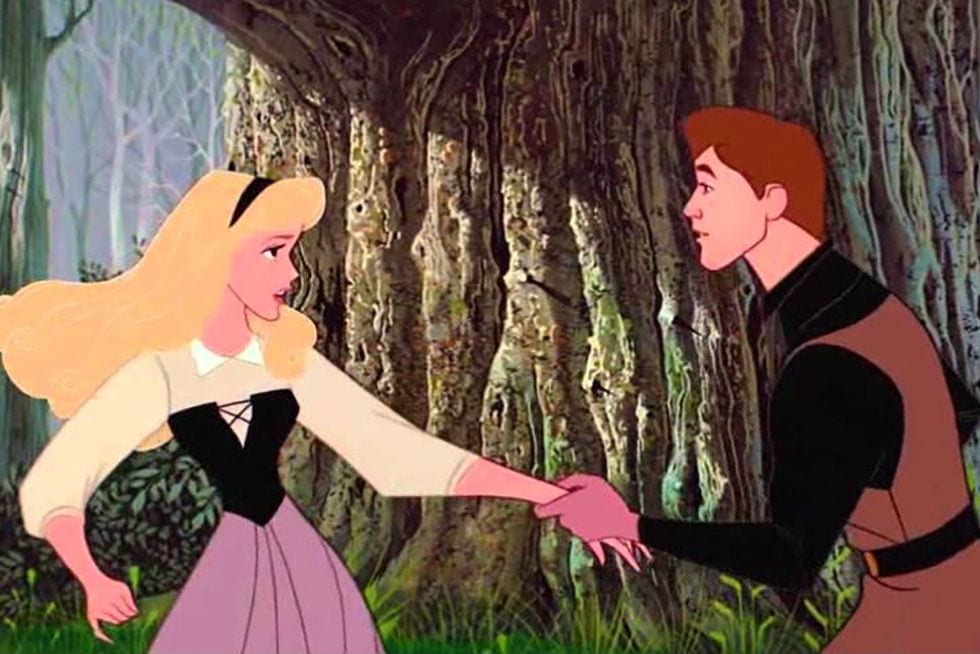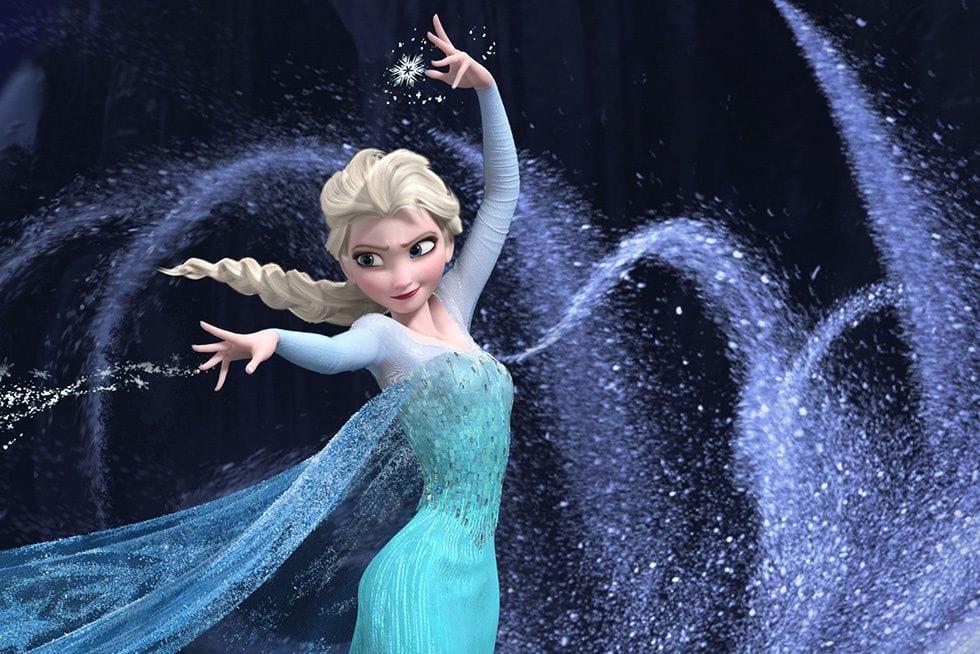It’s a recurring joke that Disney films have all sorts of double entendres and hidden messages, often sexual in nature. What most people don’t appreciate is just how far this textual duplicity goes, and how many layers of meaning can be revealed in something as simple as one of their catchy sing-alongs.
In this piece, we’ll be looking at Disney songs through the lens of hardcore hermeneutics — analyzing not just their surface message, but the deepest, most heartfelt and often craziest meanings that hide under the flashy colors and happy-go-lucky lyrics. Be warned, you may never be able to hear these songs the way you did before!
“Work Song” – Cinderella (1950)
Old Disney movies represent a challenge for modern-day feminists, as they balance an unapologetic emphasis on female protagonists against a wealth of antiquated gender-role clichés. The so-called “Work Song” from Cinderella probably encapsulates more of Disney’s bygone gender representation than anything before or since.
The infamous line “Leave the sewing to the women!” is groan-inducing, but it’s also the only thing about the song that is uncomplicated. In particular, it seems bizarre that for a lyric (and to some extents a story) supposedly so resolute on reinforcing traditional gender roles, the song bluntly refuses to draw an equivalence between femininity and domesticity. If anything, the mouse Jaq argues that household work is exactly what’s keeping our female hero incarcerated: “Night and day it’s Cinderelly / Make the fire, fix the breakfast / Wash the dishes, do the mopping.” I’m not trying to sugar-coat or exculpate or rose-tint the song in any way – these lines amount to a feminist critique that was rather well-timed for 1950, and you’d be blind not to see it.
That this is difficult to reconcile with the song’s more conservative statements – the suggestion that, given her freedom, Cinderella would focus on making a dress “so pretty” that she’d look “more beautiful than all” – is exactly where the song’s interesting core lies. A more modern Disney princess like Moana may not have to worry about such “girly” things, but the (often overlooked) consequence is that her femininity fades into the background – perhaps even into insignificance? If you gender-swapped Moana, you could make almost the same exact film with a boy as a protagonist, changing nothing in the dialogue but the pronouns. Of course, this is a feminist success in its own right: shouldn’t you be able to tell the same story with a boy or girl as a protagonist, indifferently? Isn’t that the very definition of equality?
Call her antiquated, but Cinderella proposes a radically different solution. More, she demands that it be taken seriously. She doesn’t just embrace her gynocentrism, she wears it brashly, proudly, garishly, joyfully. The dress in the song is metonymic for her femininity: the protagonist envelopes herself in pink frills and ribbons in a gesture that someone like Moana (however wonderful she may also be in her own way) is simply not equipped to understand. There is nothing about Cinderella that is interchangeable, nor does she display the slightest hint of shame for what she is and dreams to be. To paraphrase (iconoclastically) Cormac McCarthy, whatever her antecedents, Cinderella is something wholly other than her sum, nor is there a system to divide her back into her origins, for she will not go.
And that’s what they all do, those old Disney movies. They harken to a cultural code for femininity that is, of course, largely outmoded. But at the same time, they remain aggressively, deliberately, uncompromisingly feminine with a simplicity of execution that contemporary Disney princesses struggle to emulate. There are far too many sides to this argument to either accept or dismiss it in one breath, and (like it or not) there has never been a tune out there that captures this complexity better than Cinderella‘s “Work Song”.
+ + +

“When I see an Elephant Fly” – Dumbo (1941)
That the crows in Dumbo make for a massively problematic and retrograde representation of African-Americans is, I think, widely-enough accepted that it calls for no further elucidation (their leader is called Jim Crow… ’nuff said). Still, this troubling musical piece does succeed in making Dumbo’s parable even more poignant, which is quite the feat since this is already among the most heart-rending of all Disney movies (does it beat Bambi? Watch the “Baby Mine” sequence again and tell me it doesn’t).
The gist of the song is that Dumbo has escaped the circus and revealed himself to the crows, only to be met with suspicion: they do not believe he can fly. Or in other words, the little elephant escapes the coercions of the dominant establishment he was born into and turns for acceptance to dispossessed minorities – but even they reject him. The song emphasizes Dumbo’s solitude as a circus freak who finds no place in any social stratum.
There is something vaguely prescient about this song, inasmuch as Dumbo is, in a certain sense, one of Disney’s first disabled characters (the ears which segregate him into a “freak show” are the equivalent of a physical deformity… and there are certainly thematic overlaps between the young elephant and the various versions of Elephant Man). Thus, the song reflects the ways in which disability discourse lagged for a long time behind other branches of identity politics (like race and gender) in being acknowledged by the special and general public alike. In this sense, the fact that Dumbo remains the only mute character is extremely significant: not only is it a disability in and of itself, it reflects how disabled identities had no voice (or not yet).
The song partakes in identity clichés of the time more than it challenges them, but it is important to note that its execution rests entirely on intelligent and self-critical puns. There is, in fact, a suggestion that seeing “an elephant fly” may itself be a pun (with “elephant” folding over as an adjective to signify a “gigantic fly”). The point, then, is that “I been done seeing about everything” when I have seen past the flat, literal “front” of language and into the meaning beyond it.
The song is about finding value by transcending social codes (in this case language), not by conforming to their rules. This includes the retrograde codes that afflict the song’s own execution: the parallel with non-conformist individuals transcending their codified society to find their own identity is radically subversive. It lends the song the means to criticize its own failures in minority discourse (or at the very least, acknowledge its limits). They knew not how they erred, sure, but they knew they were in error – and that’s perhaps more than we can say of ourselves, in this Trump era of ours.
+ + +

“I Wanna Be Like You” – The Jungle Book (1967)
In The Birth of Tragedy, Nietzsche famously described the role of music as one of “intoxication and self-forgetfulness”, and there are numerous Disney songs which reflect that: The Lion King‘s “Hakuna Matata”, The Little Mermaid‘s “Under the Sea” and The Aristocats‘ “Everybody Wants to be a Cat”, among others. Even so, nothing traces the original Nietzschean dialectic with such scholarly punctiliousness as The Jungle Book‘s “I Wanna Be Like You” – and very little comes close to matching it for sheer richness and euphoria.
All of the characters here forget themselves as they are helplessly intoxicated by the hypnotic rhythm, as required by the German philosopher. The Nietzschean divinity of music, Dionysus, was described by philologist Walter F. Otto as “taming men’s opposition with whips of madness”, and that’s exactly what the god proceeds to do here as he becomes incarnate in King Louie, “the king of the swingers”.
If Nietzschean madness is a metaphor, then it’s hardly treated as a loose one: Baloo, whose in-groove cry is “Get mad, baby”, loses all cognition of self when hearing the music. Like a shaman in a rain-dance, or a teenager swirling to a trance beat, the bear becomes no more than a pulse in the communal ecstasy.
The counterpoise to Dionysus described in The Birth of Tragedy was Apollo, the god of sculpture and perfect forms, represented here by the backdrop: dusty ruins, bricks and statues from a civilization now presumably extinct. As Mowgli and Baloo surrender to Louie’s chaos on the literal plane, civilization itself crumbles before the anarchic apes on the symbolic one – a transition that is represented most successfully by the film’s game of mirrors.
Visually, each character in this musical piece is set up as a reflection of the next: Mowgli apes the apes by replicating their dance moves, even as Louie desires to be akin to Mowgli (“I wanna be like you”). Yet Louie is also the parody of the French dynasty of Louis kings, a distorted symbol of authority, shadowed by a smaller ape who acts as his replica (a parody of King Louie’s parody). Bagheera and Baloo also make for a parody of each other as they swap roles (one is serious, the other the comic relief, by turns). Baloo dresses up as the apes he was trying to antagonize; Bagheera camouflages by mimicking a statue of a panther that is identical to himself… there are almost more mirrors in this little song than in Stanley Kubrick’s The Shining!
As Louie’s apes dance together – all self-similar, all swinging in perfectly mirroring couples – Mowgli takes a chimp by the hand and joins in with the choreography. He has “become like you” – and indeed, so has every other character.
Nietzsche’s Dionysus was never offered a more reverential tribute than in Disney’s fantastic “I Wanna Be like You” ballad, as the edges of the titular “I” and “you” are blurred to the point of sublimation. All referents of order and tradition are collapsed, including the inexhaustible (and usually indispensable) structure of language, which caves into the euphoric chaos as the singers end up babbling inarticulate sounds.
This joyful atmosphere was abandoned in Jon Favreau’s 2016 remake of The Jungle Book in favor of something much darker and disturbing. The result, while truer to the source material, was nowhere as rich and layered as the original by the Sherman Brothers: love of life, fear of death, joy and terror, ecstasy and climax, everything that characterizes Nietzsche’s eternal deity is so well-encapsulated in this amazing song that it transcends its own film, along with the very loose genre limits that were posed by Disney animated films.
+ + +

“Poor Unfortunate Souls” – The Little Mermaid (1989)
“Those poor unfortunate souls!” exclaims Ursula, the sea-witch, with obvious distaste. Her exchange with Ariel represents a self-contained narrative mythos standing amid the multiple archetypal tropes that litter The Little Mermaid like seashells on the sand. It is a common re-staging of the Faustian barter with Mephistopheles, although here the Christian symbolism is left aside, and the film eventually steers itself towards a happy ending (also a primal archetype).
The music is exquisite, constantly vacillating between a tone of motherly tutorship and one of understated threat, effortlessly switching from dialogue to arias and back, from the early waltz-like brio to the darkness of an underworld invocation. While other Disney songs focus on the corruptive or destructive qualities of evil, “Poor Unfortunate Souls” tackles the subtler question of its seductive power, drenched with self-irony as Ursula cycles through acts, roles and personalities which reflect the fears and desires in the gaze of Ariel. Like all great Disney villains, Ursula compounds her malevolence with an irresistible, inveigling personal charm – but the depth in her lyrics is completely unique.
“Those poor unfortunate souls” – these may well be the most poignant words in the entire Disney canon. The register is that of a speaker who is external to humanity and to the “souls” which make up its ranks, as though a primal goddess were stooping down to contemplate her subjects. That the line is uttered with mock compassion serves to draw a gulf between the transcendental (be it the goddess personified, the devil, the supernatural, the forces of destiny), which is incarnate here in Ursula, and base, earthly nature, represented by the worms crushed and trapped in the witch’s lair.
Let us pause on the word “unfortunate”, the etymology of which descends from the Latin word Fortuna, also the name of the Roman goddess of fate. Inasmuch as fortune is a conceptual sibling to fate and divine will (a particularly powerful association in tragic drama), the word “unfortunate” could be read as essentially “un-transcendental” – and therefore, in the song’s system of oppositions, as natural. Thus “unfortunate” and “natural” cross-pollinate each other semantically, investing these four words with an aura of melancholy and compassion which has scant parallels in any Disney production.
It is important to note that Ursula’s barter is a fundamental catalyst for the fulfillment of the heroine: if Ariel cannot agree to it and become human, there is no overriding her father’s authority, no reaching out to Prince Eric, and no fateful happy ending. Though Ursula operates out of self-interest, her offer is not evil in and of itself. What she is selling is agency, and specifically agency through power – the power to break free from the shackles of family (her father), culture (her fish friends) and even nature (her condition as a mermaid). Ursula allows the transcendence of those very natural limits she sings of, those helpless subjects which surround Ariel as indistinct worms on every side – those poor, unfortunate souls.
The song in its entirety is therefore a potent metaphor for the human condition, torn between a deterministic condition of passive suffering, and a will to break the rules and go beyond whatever the world around us (re)presents as law and necessity. The terror of assuming our own power is even greater than that of being chained to a state of pain – which is why Western cultures have traditionally portrayed it via characters like Dr. Faust, King Midas, Tithonus and various others. As we look into Ursula’s cauldron, we see the forces which bind and determine us. We see society, family, culture, morality, nature itself, and we see them all for what they are – vaporous, feather-slight constructs which can be razed with a brush of the finger. The freedom that we subsequently stare into is terrifying: for in that void there is no anchor for identity, no milestone for morality, no self at all that looks back from the mirror.
Representations dealing with this myth are usually cautionary: do not sell your soul, be careful what you wish for, there are bigger powers than you and you are not equipped to judge or understand them, and so on. Ariel, bursting with all the inebriating power of a fairy-tale princess (always so beautifully captured in Disney productions), ends up steering her trope into a sacrilegious happy ending, and thereby amends the old message. As she becomes her own goddess, the little mermaid’s ultimate message is lacerating: you are omnipotent. So be careful.
+ + +

“Heigh Ho” – Snow White and the Seven Dwarves (1937)
As catchy as they come, “Heigh Ho” is the hymn of the dwarves in Snow White, and quite possibly the most famous Disney melody in the world. It is also (not as famously) the Disney song that can most readily be traced back to Marxist ideology and imagery.
The dwarves, homogeneous in their handicap (of stature – to whit – of class) and equal in their collective work, are the synthetic champions of the proletariat, celebrating genuine labour (“It ain’t no trick to get rich quick”) and a life dedicated to productivity (“To dig is what we like to do”).
The song is about the inherently communal nature of the working classes, as they work, share and live together in equality. It ends with two overt symbolic sequences: the dwarves marching in line as their shadows are projected onto a (red) backdrop, looking gigantic in the sunset, and later the dwarves marching together with the (red) sunset itself as a backdrop, into what appears to be an Edenic spring – in any case a signifier of life and nature.
Both of these images appear to suggest the same Marxist slogan – that the future belongs to the proletariat. It’s hard to tell whether the song is genuinely pushing that message, or just aping the imagery and clichés of its time as a form of cartoonish parody (the long-bearded dwarves resemble an aggregation of 19th Century Marxists, but in a comical, ridiculous caricature of themselves).
There may not be a simple answer to that question, because the song’s authorship is composite: Larry Morey wrote the lyrics, Frank Churchill the music, Walt Disney made up the dwarves, and anti-establishment immigrant Albert Hurter (probably our prime suspect) oversaw the whole visual execution. In any case, whether by accident, design or deliberate contortion, “Heigh Ho” remains Disney’s most successful (and subtlest) shot at a Communist anthem.
+ + +

“Gaston” – Beauty and the Beast (1991)
In the best tradition of Disney songs, Gaston’s narcissistic ode to himself is funny, catchy and deeply charming. Tensions in representation of self, or split personalities, provide the thematic core: majestic Gaston and scrawny Lefou represent two aspects of the same self, respectively in a state of fantasy and in a state of anxiety (the servility of Lefou, ostensibly so selfless, is in fact his preemptive apology). The scene explores the interdependence of these two poles, each succoured by the validation reciprocally offered by the other. This yields a social reading as well, with the struggle of the psyche carrying over to its wider social structures: father and son, leader and follower, captain and sailor, winner and loser, star and outcast, and all the many iterations of alpha and beta.
With all that out of the way, the song wouldn’t be half so memorable if Gaston himself weren’t so profoundly, irresistibly endearing. What even the writers and producers were unable to erase from this intended villain is his eternal jubilation, his indestructible joie de vivre which stems from being, truly and totally, his own glorious self. The song is meant to be cautionary, reminding us that we all have a Gaston somewhere inside ourselves. In this particular case, the message is far more exhilarating than it is scary: should we lament that in all of us there is an innate “Hurrah” which precedes the symbolic and starts from the self to go back to the self? Is it socially insufficient? Yes, clearly. But is it not also revitalizing and protective for anyone stumbling through the thorny fields of maturation?
I believe so, and the song itself provides the evidence: Gaston starts out “looking so low in the dumps”, depressed by that ever-so-human experience of rejection. And yet, as Lefou and the others start singing and reminding him of his identity, his bad mood reluctantly, gradually, helplessly dissolves under the heat of his inexhaustible exuberance, and he is drawn in spite of himself into their chorus. First he trots out casual remarks (“As a specimen, yes, I’m intimidating… As you see I’ve got biceps to spare”), and at last he surrenders to his irresistible narcissism and dives into a brawl, metaphorically diving into his infinite joy of living (or more aptly, in this case, joy of being).
Towards the end of the song, Gaston grabs Lefou and swoops him up into a partner dance which, of course, asserts the interdependence of their two thematic poles, but which is also a really funny vignette. And therein lies Gaston’s magic, in that he is so unashamed. Not only does he remain so inherently positive that none of the world’s slings and arrows can keep him down, he expresses his positivity with nary a concern for public judgment or social repercussion – in the funniest, most delightful and most ridiculous of choreographies. You may not want this guy at the steering wheel, but once every rare now and then, you have to take your inner Gaston for a ride.
+ + +

“Once Upon a Dream” – Sleeping Beauty (1959)
In terms of lyrics and animation, “Once Upon a Dream” is fairly simple. What makes it so affecting is its bizarre metatextuality: the song can be read as Aurora telling her imaginary (or not so imaginary) prince about their connection. Yet it can also be read as the narrator him/herself speaking to the fairy tale that s/he is narrating. The expression itself “fairy tale” is dubious – it designates a story that is not true, in everything from its history to its message, so much so that in slang the expression means precisely “not true”. The concept is remarkably complicated – and the song, correspondingly, yields to an infinity of readings.
Clearly, “Once Upon a Dream” understands the “untruth” of its own message – “And I know it’s true that visions are seldom all they seem”, go the lyrics, and in the background we spot a square tree – a testament to the song’s artificiality and detachment from the natural world, a clear sign that we are in a garden and not a forest. Not only is Aurora aware that “visions” are deceptive, her own song foregrounds it. The princess is walking in a dream even as she speaks about a dream, and the vaguely Edenic resonance of her overture below a tree serves to ground the film in the timeless roots of myth. Her setting is a dream, and it is also the raw world of the symbolic order (assuming the two aren’t being conflated).
Here is the song’s refrain: “I know you / I’ve walked with you once upon a dream.” “I” is Aurora and “you” is the prince, but “I” is also the spectator and “you” is the fairy tale playing out before him/her, or (if we want to stretch it) the “I” is the narrative that has walked with “you”, the fairy-tale myth, to its conclusion many times before. The planes of the song are multiple, and the expression “Once upon a dream” captures this – it is narrative (Once upon a time), even as it is a “dream” of narrative.
“Once upon a time” occurs “upon a dream”, suggesting that the fairy tale, which by definition is no more than a dream, is itself contained by/within a dream. This meta quality is further reinforced as Aurora and her prince dance over a lake and their image is mirrored in reverse – their own re/presentation, the tale that addresses itself, and which couple is real, which one is the illusion? Is the reflected image, being no more than a projection, a more accurate representation of what fairy-tales are, and therefore more real than the real couple? Which is the ultimate referent, the image or the imagining?
These questions, carried as they are by the great and ancient genre of the fairy-tale, infinitely repeat themselves across generations, singing this very same song in different manners and through different media. No wonder that the indeterminate subject can tell the object, “I know you”. And, though he/she/it knows that the object’s nature is deceptive, that “visions are seldom all they seem,” they embrace that deceptiveness as part of the whole – “But if I know you / I know what you’ll do.” In the end, they know the story, and therefore its function.
The song closes by going back to a note of ambiguity – “You’ll love me at once / The way you did once upon a dream‘. The cycle returns to the epistemological angst about what stable truth we can know and where we may find it. The fairy tale remains not true, but its untruth is one of the truest things in our understanding of the world. Its instability is one of the most stable objects in our imaginary, and among the most recurring. The text does not solve this anxiety, but rather couches it in one of the sweetest and most tranquilizing melodies in the Disney repertoire (courtesy of Tchaikovsky). Perhaps the only thing this song tells us that we did not already know was that extreme complexity could be so soothing.
+ + +

“Let It Go” – Frozen (2016)
There have been songs in the past that eclipsed the success of the musicals they were embedded in, but only a handful in the history of film have succeeded in doing so with as colossal a hit as Disney’s Frozen.
“Let It Go” is, very simply, a masterpiece. It gracefully brings together thematic opposites which are usually difficult to handle side by side, transitioning from the intimate opening to the epic tone of the closure, burnishing the simplicity of its message with the occasional audacity of its vocabulary (I cannot substantiate this, but I suspect it’s the world’s first children’s song to make use of the term “fractals”).
A substantial role in this game of contrasts is played by the relationship between the visuals and the song’s theme (or apparent theme). Ask anyone what “Let It Go” is about, and most will tell you something along the lines of “being yourself rather than conforming to social expectations, behaving naturally and not in accordance with an arbitrary protocol.” In contrast with that perceived message, the animation shifts progressively from the natural, even primordial setting of a wild mountain to more and more elaborate constructs, culminating in a palace which is positively baroque. Elsa is simultaneously leaving and entering artifice, embracing and transcending nature, and therefore both finding and negating symbolic resolution.
It’s been noted – because it is obvious, really – how readily the song lends itself to queer interpretation, with Elsa, Anna and the complementary characters holding diverse positions and roles on the gender spectrum. And clearly, there are portions of the lyrics that seem tailor-made for gender identities that are both deviant (“that perfect girl is gone”) and oppressed (“let the storm rage on”).
All that notwithstanding, the primary strength of “Let It Go” remains its infinite adaptability. Yes, this is a “coming out hymn”, but it is also the cry of anyone aspiring for freedom and self-fulfilment, no matter what their gender identity or societal status may be. The “it” in “Let It Go” remains unspecific by design, and the song may be picked up by anyone who wishes to make it her or his own.
In fairness, this could be construed as a weakness: perhaps Frozen is compromising the depth of its message to cater to the enormous breadth of its audience, as pop music does so frequently. In this case, though, I think the pros of generalizing the message outweigh the cons. With its emphasis on commonalities, Elsa’s song does not dilute gender deviations, it normalizes them: the magical element she uses to bring her snow-creatures to life is, metaphorically speaking, the universal humanity that binds straight and deviant listeners alike, and the icy bridge she raises shoots triumphantly across the stone cliffs of identity.
Ironically, the expression “let it go” has proved among the toughest refrains to translate in other languages, precisely because the tryptich’s perfect synthetic power is impossible to reproduce. The closest version I know is the German “Ich lass los” (“I let go”), but most Western languages opt to rephrase the chorus completely (in French it says “Liberated, delivered”, in Italian it is “From now on [I shall let the heart guide me]”, and so on). Elsa’s message is every bit as difficult to translate across languages as it is easy to translate across identities.
“Let It Go” brings together the qualities of many of the songs we discussed in our list. Elsa is as brazen as Cinderella, as sophisticated as Ariel, and her song is as rapturous as King Louie’s. Her representations of nature and artifice, her politics which are both specific and universal, her richness and her simplicity, are all elements which support and contradict each other at the same time, in a play of signifiers so exhilarating and powerful that it will be a long time before Disney, or anyone else for that matter, can sing again on peaks so high.


